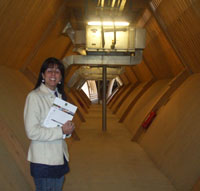 1. Viña Perez Cruz 1. Viña Perez Cruz
Alto Maipo Valley
www.perezcruz.com
Contact: Cristian Narreto cnarreto@perezcruz.com
Maria Jose Concha mjconcha@perezcruz.com
Driving through the suburbs of Santiago and crossing into the outskirts of the Metropolitan Region, passing by the mega wineries like Concha Y Toro and Santa Rita, I entered the gates of this relatively new winery, after the taxi went past it a couple of times. The family owns so much of land that one has to drive almost 2 kms inside, with vineyards on both sides of the road, before reaching an architecturally beautiful, low lying modern building with wooden exterior, which is the Perez Cruz winery.
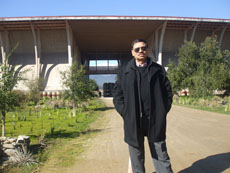 This winery is a prime example of super-rich entering wine business as a hobby, passion or simply to carry on the family name, profitability being not of prime importance. The Perez family owns the biggest Chilean gas company Gasco, Metrogas, an electricity company CGE and several other ventures. There is a story that when Pablo Perez, father of the current generation of eleven sons and daughters died about 20 years ago, the siblings who had all been living a very low profiled life had no clue about the immense wealth their father had created and left for them. This winery is a prime example of super-rich entering wine business as a hobby, passion or simply to carry on the family name, profitability being not of prime importance. The Perez family owns the biggest Chilean gas company Gasco, Metrogas, an electricity company CGE and several other ventures. There is a story that when Pablo Perez, father of the current generation of eleven sons and daughters died about 20 years ago, the siblings who had all been living a very low profiled life had no clue about the immense wealth their father had created and left for them.
The winery was built on the land purchased by Pablo in the sixties for the cattle, to honour him and keep his memory alive- a pointer to the consumers that the family would want to make good quality to keep the name respectable. It was designed by the architect José Cruz Ovalle whose brief was to make it modern but using economical and natural materials. He came up with a laminated wood building with low stone walls around the base and some steel. The winery built in 2001 has a unique design and would perhaps cost three times as much to build today.
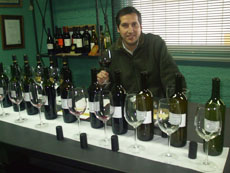 The family owns 1400 acre estate. 160 hA are vines, 60 of which are planted and 40 yet to be planted. The winery produces 65,000 cases and proposes to increase it to 120,000 cases after the planting programme is complete. The average quality can be guessed from the fact that the wines have a high average selling price of around $ 62 a case. The family owns 1400 acre estate. 160 hA are vines, 60 of which are planted and 40 yet to be planted. The winery produces 65,000 cases and proposes to increase it to 120,000 cases after the planting programme is complete. The average quality can be guessed from the fact that the wines have a high average selling price of around $ 62 a case.
It exports 85% of its production, the biggest market being the monopoly of Ontario, Canada. Earlier, 95% of the production was exported. However, domestic consumption has been increasing over the years with the share going up from 5% to 15%. Selling only six labels, the company does not market them in supermarkets.
Although most of the production is around Cabernet Sauvignon Reserva- the entry level flagship wine clocking 55000 cases, Limited Edition Liguai and Quelen are the premium wines. I found Carmenere Limited Edition retailing for $24 a very aromatic, floral and pleasing to the palate.
2. La Ronciere
Rapel Valley- Cachapoal
www.laronciere.com
Contact: José Manuel Muñoz- Winemaker and GM
jamunoz@laronciere.com
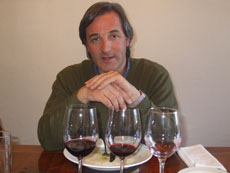 This 60-year old winery owned by Alejandro Orueta makes 2.5 million liters of bulk and 30,000 cases of bottled wines made from grapes of different terroirs, according to José Muñoz , the winemaker who has been working as the General Manager for over a year. The winery has been modernizing for over 20 years and is now ISO 9001 certified. This 60-year old winery owned by Alejandro Orueta makes 2.5 million liters of bulk and 30,000 cases of bottled wines made from grapes of different terroirs, according to José Muñoz , the winemaker who has been working as the General Manager for over a year. The winery has been modernizing for over 20 years and is now ISO 9001 certified.
An interesting feature of the winery which has several wines at different price points, including the affordable wines, is the lower alcohol levels, varying from 13.5-14%.
The passionate José has his objective well defined- to produce the best wines in Chile. As an example he explains that they bought expensive grapes from Limarí Valley in the north.
2. Córpora
(VC Family Estate)
Alto Cachapoal Valley
www.cw.cl
Contact: Isabel Prado rrpp@cw.cl lgarcia@cw.cl
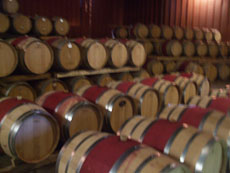 Owned by the Ibañez family, Córpora is one of the biggest holding companies of Chile with diversified business interests and also own Bodega Córpora. Gracia de Chile, Veranda, Agustinos and Porta Winery belong to this highly influential and diversified group. Owned by the Ibañez family, Córpora is one of the biggest holding companies of Chile with diversified business interests and also own Bodega Córpora. Gracia de Chile, Veranda, Agustinos and Porta Winery belong to this highly influential and diversified group.
VC Family Estates was created in 1989 to produce fine wines. Although the group philosophy is not to focus on varietals (in the Chilean wine hierarchy varietal though based on a single grape variety with at least 85% according to the law, is value-for-money, low end quaffable wine at a low price point. Reserva which are much better on the palate due to lower yields and being aged in oak barrels, sell for almost twice as much)
‘We are looking for different styles’ says Ana Salomó, winemaker for Porta wines. Incidentally, Ana’s first job after she graduated from her enology course in Santiago was with Champagne Indage in Narayangaon, Maharashtra.
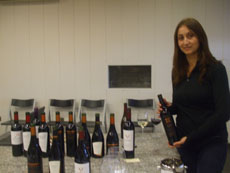 At first glance there appear to be too many labels, each having a different winemaker assigned. Gracia de Chile is a label for big volumes and supermarkets.-selling at the same price point as Porta. As is traditional with several wineries, the group also procures grapes from different valleys to produce diverse qualities and styles. Thus Cima Porta label is a Gran Reserva and is the top label. At first glance there appear to be too many labels, each having a different winemaker assigned. Gracia de Chile is a label for big volumes and supermarkets.-selling at the same price point as Porta. As is traditional with several wineries, the group also procures grapes from different valleys to produce diverse qualities and styles. Thus Cima Porta label is a Gran Reserva and is the top label.
VC Family Estate is a multi-valley wine company with 1500 hAs planted in Aconcagua, Maipo, Alto Cachapoal, Colchagua and Bío Bío in Chile. It also has vineyards in Neuquén in Patagonia Valley in Argentina.
The company is undergoing a name change and will be called Bodega Córpora Chile/Argentina soon.
3. San José de Apalta
www.sanjosedeapalta.cl
Contact: Ramón Riaño Allan, Commercial Director riano@sanjosedeapalta.cl
Rancagua (Capital of O’Higgins Region)-based San Jose de Apalta is a 40 year old family run winery which has been making bulk wines and also box wines for Nordic countries and of late has been concentrating on value-for-money bottled wines as well.
Interestingly, the wine has been imported into India through S K Beverages and finds listing in hotels like the Park, Ashok etc. Unfortunately, the importer decided to call it a day and the winery is seeking a new importer.
It is important to know that the winery has nothing to do with Clos Apalta- the iconic winery of Lapostolle in Apalta Valley. Most people find the name confusing.
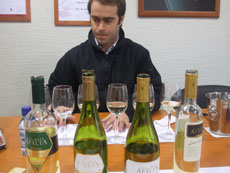 The company owns 150 hAs of vineyards with 50,000 case exports. 600,000 liters are sold in bulk. The earthquake of February this year caused a significant drop in crop yields thus pushing up prices of bulk wine. San Jose has managed a hefty 30-50% premium on their wines, indicating the high demand of its bulk. The company owns 150 hAs of vineyards with 50,000 case exports. 600,000 liters are sold in bulk. The earthquake of February this year caused a significant drop in crop yields thus pushing up prices of bulk wine. San Jose has managed a hefty 30-50% premium on their wines, indicating the high demand of its bulk.
The company has made a lot of progress in the wine-in-the-box technology and the customer base suggests that as the bags get more popular, they would have assimilated technology to offer better packaging solutions to their customers. Of course, India is far removed from the concept as of now and this facility would be of no merit. However, the varietals are very decently priced. Their highest levels- Gran Reserva, though expensive are an evidence of their capability to produce excellent quality if the market bears the price. No wonder two of their wines won a Gold medal at the Grand Hyatt Catad’Or wine competition this year.
4. Viña La Rosa
Cachapoal Valley
Gonzalo Cárcamo-WM
www.larosa.cl
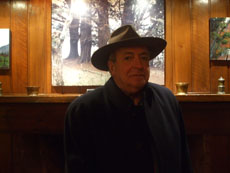 Established in 1824 in Peumo, the western part of coastal mountains in Cachapoal valley, this winery owned by the Ossa family is perhaps the oldest family winery in the same hands. Viña Cousiño Macul is older winery but has passed through different families. At La Rosa – even the old original house which is now being used as the guest house has always belonged to the family. Established in 1824 in Peumo, the western part of coastal mountains in Cachapoal valley, this winery owned by the Ossa family is perhaps the oldest family winery in the same hands. Viña Cousiño Macul is older winery but has passed through different families. At La Rosa – even the old original house which is now being used as the guest house has always belonged to the family.
Like many other wineries in Chile that I have written about, this company also has big agricultural holdings with fruits and juices as a major part of the business. The President Ismael Ossa is the 6th generation owner and his son Cristobal Ossa, will be the 7th generation. Cristobal who is an engineer by profession is the General Manager of the winery.
Ismael Ossa, a very unassuming person, is an agronomist managing 16000 hA of total land holding which also includes part of the close-by mountain. Out of the total land 5000hAs are planted with fruits which they export directly or make juice for domestic and export markets. 830 hA already have vines already in production with another 200hA planted for expansion.
The company produces 400,000 cases out of which 95% are exported. Europe is their biggest market with 200,000 cases, with UK as the Main market followed by Netherland and Belgium. Japan is an important Asian market.
Despite the huge size they don’t buy any grapes from outside and use only their own. The company also produces a sparkling Chardonnay and a sparkling Rose from Merlot and Cabernet Sauvignon by Charmat (second fermentation in the tank-like Prosecco in Italy) which are value for money sparkling wines, especially the latter.
There are two basic labels- La Palma and La Capitana. The varietals tasted are of very good quality and the price-quality ratio on the whites was excellent. La Palma Reserva was typical of the direction Chile is headed-very good quality by the international standards but priced accordingly- almost double that of the varietal range which is almost a benchmark for pricing by most wineries.
La Reserva Chardonnay .was delicious and complex wine which despite its oak has kept the sanity and is refreshingly crisp- a very good value for money wine. The La Palma Reserva red was even more pleasing to the palate with aromas of strawberries and skins of red apples.
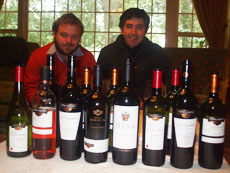 La Capitana Carmenere is a good example of how Chile has come to grips with the ‘green’ unripened fruit problem in Carmenere and managed to get it fully ripe. But the top award goes to their Don Reca Grand Reserve 2008, a cuvee- blend of about 50% Cabernet Sauvignon with the balance being Carmenere, Syrah and Merlot. One year in new oak has made the wine supple and complex. As the winemaker explains, when the wine is concentrated one can use new oak otherwise the oak will kill the fruit-and in this wine it has been used judiciously. La Capitana Carmenere is a good example of how Chile has come to grips with the ‘green’ unripened fruit problem in Carmenere and managed to get it fully ripe. But the top award goes to their Don Reca Grand Reserve 2008, a cuvee- blend of about 50% Cabernet Sauvignon with the balance being Carmenere, Syrah and Merlot. One year in new oak has made the wine supple and complex. As the winemaker explains, when the wine is concentrated one can use new oak otherwise the oak will kill the fruit-and in this wine it has been used judiciously.
‘Ossa’ is the top label of the house and you simply cannot keep the glass down once you take the first sip. Only 350 cases of 6 bottles are produced-so it was a privilege to have one bottle opened exclusively. The wine amply demonstrates the level of quality this winery is capable of achieving. It is basically a Bordeaux blend with Carmenere and Syrah added along with Merlot and Carmenere. Released after 2 years in the barrel and a year in the bottle, the wine is quite drinkable on release with a bit of decanting, though it will age well and get more complex during the next ten years.
MICRO-WINERIES OF CHILE
In a country where a production of 30 million liters of bulk wine in a winery may not raise an eye-brow, it is interesting to visit micro-wineries which proudly produce a limited quantity of hand crafted premium wines. I visited Tipaume in Cachapoal and Corcoran Wine Gallery in Maipo, incidentally both from the Alto region.
Tipaume
www.tipaume.cl
Contact Person: Yves Pouzet
ypouzet@tipaume.cl
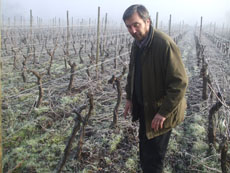 Yves Pouzet, a French viticulturist and winemaker has been living in Chile for most of the last 25 years and is producing only a thousand cases of ‘200%’ organic premium wine in Tipaume, a small estate of around 8 hAs. He sells most of his grapes to the nearby Cono Sur winery due to financial constraints-the sale of grapes gives him the cash he requires to run his micro-winery with the small quantity of grapes he keeps. Yves Pouzet, a French viticulturist and winemaker has been living in Chile for most of the last 25 years and is producing only a thousand cases of ‘200%’ organic premium wine in Tipaume, a small estate of around 8 hAs. He sells most of his grapes to the nearby Cono Sur winery due to financial constraints-the sale of grapes gives him the cash he requires to run his micro-winery with the small quantity of grapes he keeps.
‘Tipaume’ from Alto Cachapoal Valley is a blend of 60% Cabernet sauvignon, 30% Carménère, 10% Merlot, 3% Lacrima Cristi and 2% Viognier and is made in the certified organic vineyard. He calls it a ‘200% organic’ on the back label. ‘Perhaps I should change it back to 100% but I am being melodramatic because most people say their vineyards are 99% organic- the 1% reflects the final certification which takes 4 years and is the toughest part,’ he says.
He strictly follows bio-dynamical practices and even displays the legendry wolf on the label. He proudly says, ‘The vines were planted in 1996 and the vineyard was certified by the German Agency BCS-Öko since 2001, much before most wineries even thought of going organic.’
India Connection through Indage
Viticulture is in his blood and he is very proud that he is one of the few viticulturists in the world who have specialized in tropical, equatorial and also mountainous viticulture because of his varied experience in several countries in these categories. He was the winemaker at Champagne Indage in 1989-90. ‘I received a call from the Chairman Mr. Sham Chougule one day out of the blue and he invited me to come and see if I would like to work as the winemaker in Narayangaon.’ Chougule was persistent enough to employ his services for over a year.
‘I would be especially honoured to celebrate Mr Sham Chougule’s achievements in the Indian viticulture, as I consider him responsible for the most fascinating professional experience I ever had.’ Pouzet is quite amenable to work in India as a consultant winemaker besides marketing his ultra premium wine which sells for $90 a bottle at the Grand Hyatt Hotel where I was staying and tasting with him. ‘They are my regular, consistent buyers though quantity they buy is not very large’, he admitted.
“I will be most interested in developing either viticulture projects, and/or wineries in India. My experience in India has been a reality. I do believe that the development of nursery programs has to be completely revamped, so that the new plantations can be based upon serious selection of the right clones of Vitis vinifera. I am thinking in particular about mérysthème propagation, which should be very adequate to Indian regulations.’
Those words of wisdom might have an underlying implication that the nursery programme in India might not be perfect, though he refused to be drawn in any discussion, possibly out of respect and affection he has for Chougule who he says is ‘one of the most passionate wine persons I have ever met.’
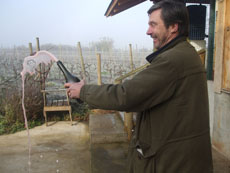 Keen on selling to the Asian markets like India, Indonesia and Vietnam with a portfolio that includes labels from the allied producers with similar wineries with commitment to organic production, he is quite amenable to give a lending hand to wine producers in these countries. Keen on selling to the Asian markets like India, Indonesia and Vietnam with a portfolio that includes labels from the allied producers with similar wineries with commitment to organic production, he is quite amenable to give a lending hand to wine producers in these countries.
He is also working on a very limited production of Pinot Noir based Champagne styled sparkling wine which I found delicious even at 9 in the morning. Earlier I had found Tipaume very well integrated and balanced full bodied wine with velvety texture in the mouth and the flavour that lingered on and on but sat a tad heavy on the palate. A glass of this age-worthy fine wine would go very well with a celebratory meal with mutton kababs, tandoori lamb shank and be perfect with steak or the Chilean red meat preparations.
2. Corcoran Wine Gallery
Alto Maipo Valley
www.corcorangallery.cl
Contact: Madeline Corcoran
contacto@corcorangallery.cl
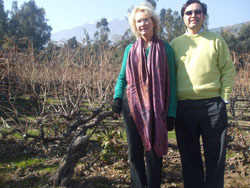 Corcoran Wine Gallery is run by an American entrepreneur Madeline Corcoran who works with her partner/ winemaker Javier Rodriguez in a micro-winery (garden winery as they call it) built within the beautifully located home with 1 h/A of vineyard in the backyard- the exceptional soil and micro climate yielding an exceptional quality of Cabernet Sauvignon grapes. Corcoran Wine Gallery is run by an American entrepreneur Madeline Corcoran who works with her partner/ winemaker Javier Rodriguez in a micro-winery (garden winery as they call it) built within the beautifully located home with 1 h/A of vineyard in the backyard- the exceptional soil and micro climate yielding an exceptional quality of Cabernet Sauvignon grapes.
‘Corcoran is a single vineyard 100% Cabernet Sauvignon produced in our organically managed vineyard, hand worked and harvested. It is processed, aged, bottled, corked, capsuled and labeled, by our hands on the estate,’ says Madeline. They are proud that Corcoran was selected as one of the winners for the development of infra-structure of the wine-tourism destination and for a promotional trip to New York in November.
What makes their wine so special? ‘First of all the terroir of the Maipo Alto valley is privileged because of the climate, soil and the location’, says Madeline whose winery is at the very foothills of Andes, on the outskirts of Santiago at a height of over 700m. This area is distinguished for its river influence.
She adds, ‘in the upper part, the Raco winds offer a pronounced thermal advantage. This strong warm wind blows with considerable intensity from mid-May through mid- November and is typical of the mountainous sector of Maipo Alto. This wind contributes to the micro-climate. This area has come to be widely known and respected for the tremendous quality of its wines, especially the reds.
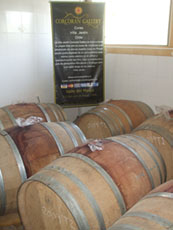 Their debutante Corcoran 2005 with a smart, luxurious label was snapped up by one of the local wine stores who sold it for $100 a bottle. But they do not have the wherewithal to supply the quantities required by the store. They would prefer to work from the cellar door or with boutique wine shops that will fetch them higher revenues as well. They want to produce the best wine in this area and stay within the small quantities they currently produce. So obsessed are they with purity in wine and the quality of life that they believe a Cabernet Sauvignon must have no other grape blended -even though Chilean laws allow up to 15% for any varietal designation. Their debutante Corcoran 2005 with a smart, luxurious label was snapped up by one of the local wine stores who sold it for $100 a bottle. But they do not have the wherewithal to supply the quantities required by the store. They would prefer to work from the cellar door or with boutique wine shops that will fetch them higher revenues as well. They want to produce the best wine in this area and stay within the small quantities they currently produce. So obsessed are they with purity in wine and the quality of life that they believe a Cabernet Sauvignon must have no other grape blended -even though Chilean laws allow up to 15% for any varietal designation.
The pair offers lunches that include their premium wine, at $120 a head and is starting a small wine-tourism experience at the winery home, within 40 minutes from both Santiago and the ski slopes of Andes.
If you want to share their passion or are planning a visit to Santiago and would like a unique eno-experience, write to contacto@corcorangallery.cl or visit www.corcorangallery.cl
Subhash Arora
Part 3 to be dedicated to the iconic wineries during my visit- Subhash Arora
|